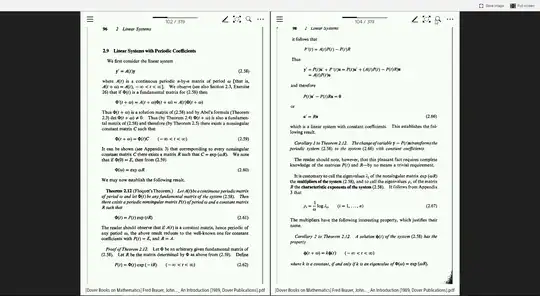I have the linear system $y' = A(t)y$ where $A(t)$ is a continuous n-by-n matrix of period $\omega$. I want to show that if $-1$ is a multiplier of this system, then there is a solution of at least period $2\omega$. I am stuck on figuring out how to begin.
Here is the relevant material: 
So Step 1: What happens when $-1$ is a multiplier of the system? This means $-1$ is an eigenvalue of the nonsingular matrix $\exp(\omega R)$ where $R$ is a matrix. Here I do not know how to proceed.